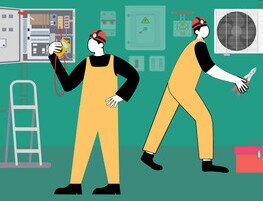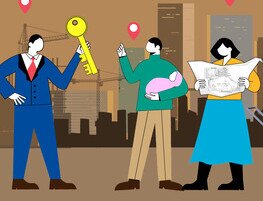Business Outlook
The Asian Retail Outlook 2024 highlights that retailers in Asia face challenges from global economic factors, geopolitical tensions, and rising consumer expectations regarding pricing, service, and product quality. In Hong Kong, retailers are impacted by local consumers traveling abroad, slow visitor returns, high operating costs, and currency depreciation, with a revised GDP growth forecast of 2.5-3.5% for 2024. Retail sales saw a double-digit decline in the first half of 2024, with domestic online sales dropping slightly. New regulations and high costs are expected to further increase operational expenses starting in 2025. To partially address the problem of labour shortages, the Enhanced Supplementary Labour Scheme (ESLS) was launched in September 2023, allowing over 2,400 applications for retail jobs, indicating a positive step toward addressing workforce needs in the industry.
The Central Government has raised the duty-free allowance for Mainland residents visiting Hong Kong from RMB5,000 to RMB12,000, with an additional RMB3,000 for purchases at port entry duty-free stores starting August 2024. The Individual Visit Scheme now includes eight more provincial capital cities, bringing the total to 59. Starting on 1 December 2024, Shenzhen visitors can apply for a multiple entry visa, which will further support the recovery of the retail industry. By the end of July 2024, Hong Kong welcomed about 25 million visitors, a 52% increase year-on-year, with around 19 million from the Mainland (up 47%). The latest 2024 Policy Address emphasises the integration of culture, sports, and tourism to diversify the economy, promoting mega events and targeting new tourist hotspots, including visitors from ASEAN countries. Additionally, the government plans to inject $1 billion into the BUD fund to aid SMEs in upgrading operations and expanding e-commerce into the Middle East and ASEAN, aiming to boost retail and related industries by attracting more visitors and stimulating local spending.
Implementing omnichannel strategies is essential to create a seamless, personalised customer journey that integrates physical stores and online commerce. While retailers have leveraged AI online, its application in-store remains limited. An effective omnichannel model must include in-store infrastructure to enhance AI use, improving supply chain connectivity, forecasting, and stock availability while reducing waste. A 2023 survey of 11,000 consumers revealed that, although 91% used in-store technology, 69% were dissatisfied due to insufficient staff support and stock issues. Many considered switching retailers for better in-store tech experience, and concerns about fraud were prevalent. Consumers expect real-time order tracking and show loyalty to brands offering faster delivery. Retailers should enhance the omnichannel experience with AI tools, optimise supply chains for better stock visibility, and prioritise cybersecurity to build customer trust.
Omnichannel retailing is crucial for brands to enhance their presence and sales across various markets by providing diverse options for product discovery and purchase while maintaining a cohesive brand image and exceptional customer experience. The integration of emerging technologies like generative AI, AR, and interactive experiences can transform customer engagement and personalisation. Meanwhile, employee engagement is vital for delivering outstanding customer service, yet sales associates often face challenges like staff shortages and time-consuming tasks. To improve operational efficiency and customer interactions, retailers should equip teams with advanced technology, prioritise training on tech skills, and implement data-driven decision-making tools to empower store operations and strengthen customer relationships.
Shifting from supply-driven to demand-driven retail enhances the personalisation of shopping experiences by necessitating increased data sharing and collaboration among value chain partners for better forecasting. AI plays a pivotal role in automating demand forecasting, inventory management, and personalised recommendations, allowing sales associates to offer real-time suggestions to customers. Additionally, generative AI can streamline operations by creating multilingual marketing content and enhancing workforce management, thereby improving hiring, training, and overall in-store efficiency. By leveraging AI and data integration, retailers can significantly elevate their in-store operations and reimagine the shopping experience, emphasising the need for a strategic approach to AI implementation across their organisations.
In an era of escalating cyber threats, safeguarding customer data and securing financial transactions are paramount. According to the 2023 report on cyber security threats released by IBM Security, the retail and wholesale industry was the fifth-targeted industry in 2022. The industry attracts cybercriminals because it processes and handles large amounts of personal data and financial information. Riding on the trend of omnichannel retailing, the complexity of physical stores with online platforms creates extra opportunities for cybercriminals due to the mix of technologies. A survey on retail cybersecurity reported that 77% of respondents from the retail industry were hit by ransomware in 2021, when it was only 44% in 2020. Retailers have the responsibility to implement flawless security practices to safeguard the integrity of retail operations, strengthen security measures, and enhance consumer trust and confidence.




































